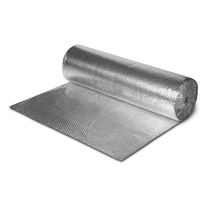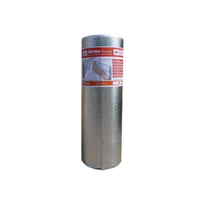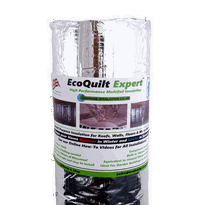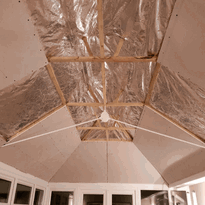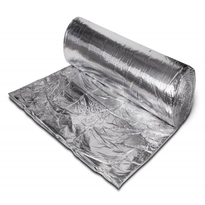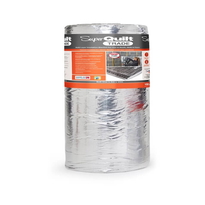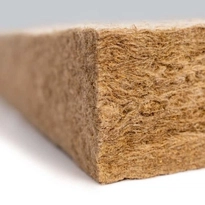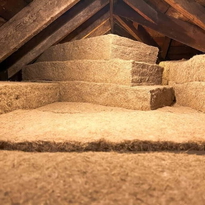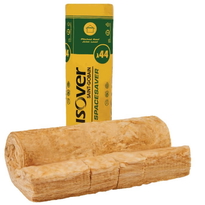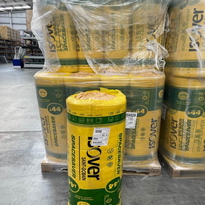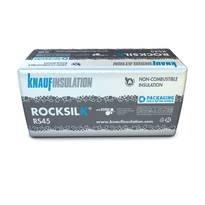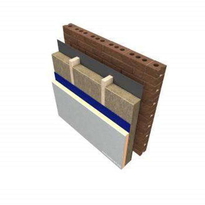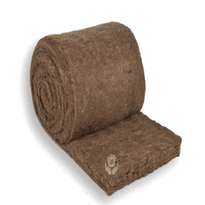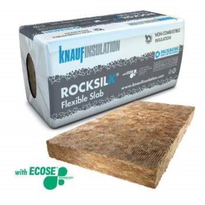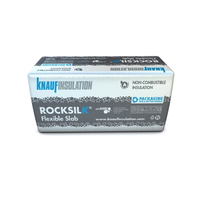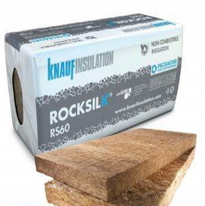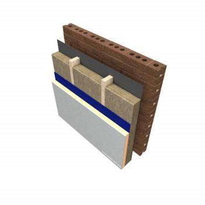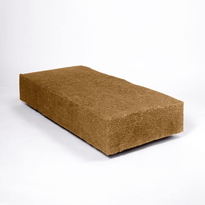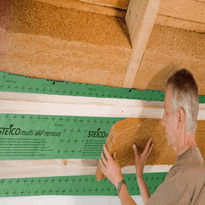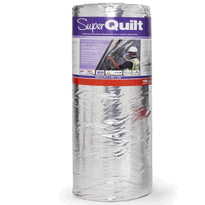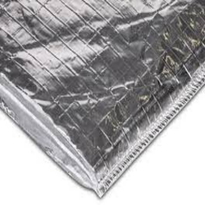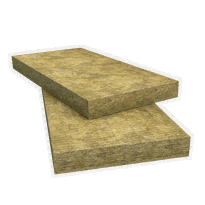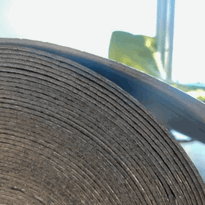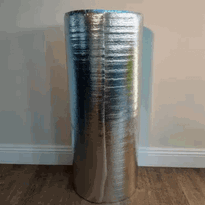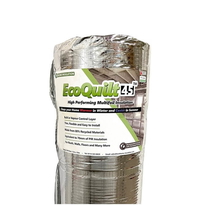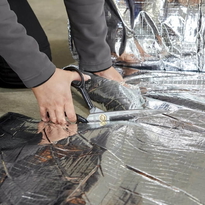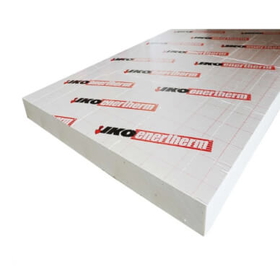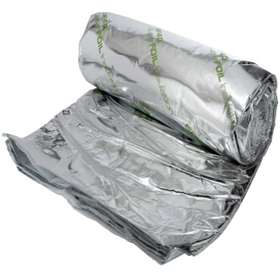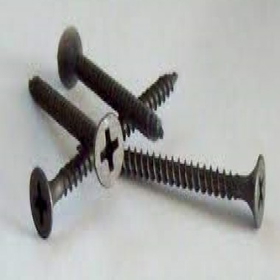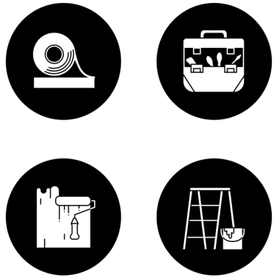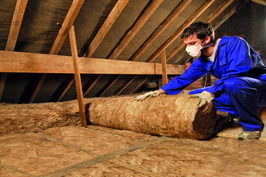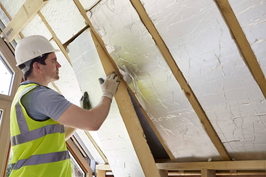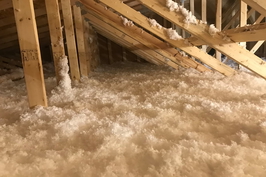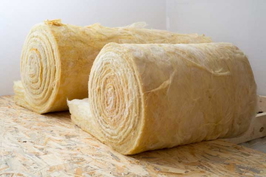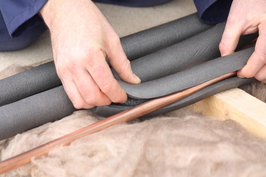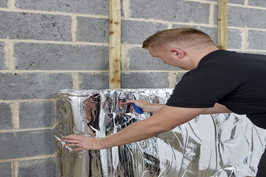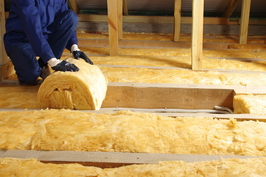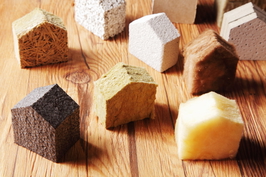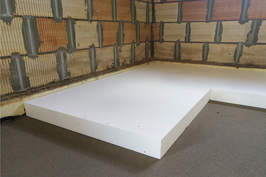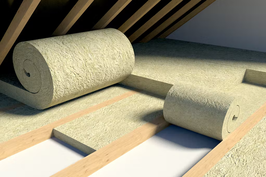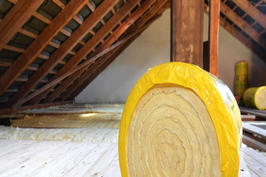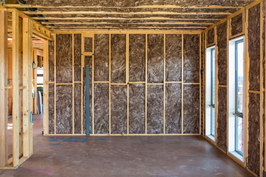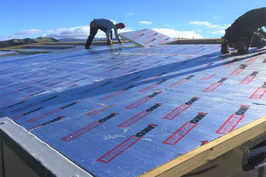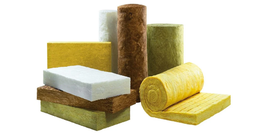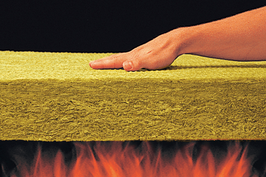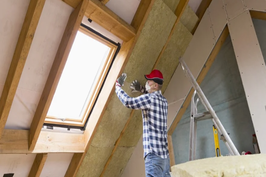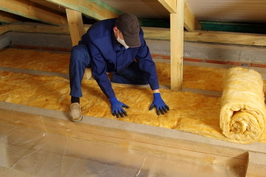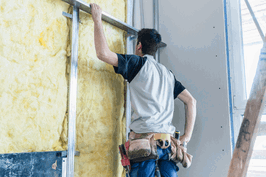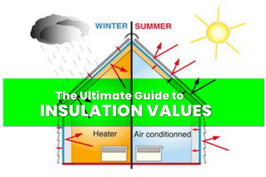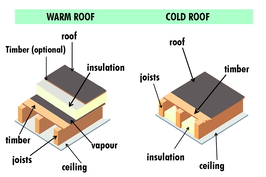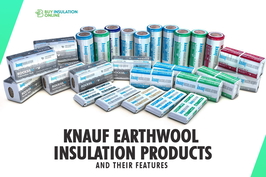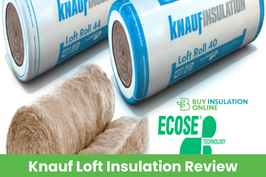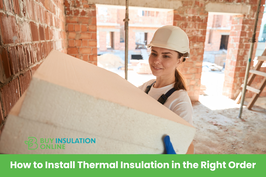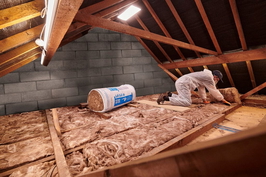Loft / Roof Insulation
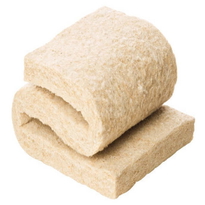
Thermafleece Natrahemp - Natural Hemp Insulation Slabs (Multiple Slabs Per Pack)
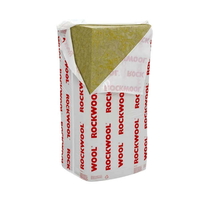
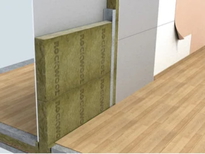
Rockwool RWA45 Mineral Wool Thermal And Acoustic Insulation Slab - 1200 x 600mm
Similar Categories
Insulation for Roofs: A Guide to Choosing the Best Option for Your Home
If you are looking for a way to improve the energy efficiency, comfort, and value of your home, one of the best places to start is by insulating your roof. Roof insulation can reduce heat loss in winter and heat gain in summer, saving you money on your heating and cooling bills. It can also prevent condensation, dampness, and mould growth, which can damage your roof structure and affect your health. Roof insulation can also reduce noise from outside, such as traffic, rain, or wind, creating a more peaceful and pleasant living environment.
But how do you choose the best insulation for your roof? There are many factors to consider, such as the type, shape, and size of your roof, the climate and location of your home, the cost and availability of insulation materials, and the installation method and difficulty.
In this article, we will guide you through the different types of roof insulation, their advantages and disadvantages, and how to install them. We will also recommend some of the best products from our website Buy Insulation Online, we are a leading online supplier of insulation materials in the UK.
Types of Roof Insulation
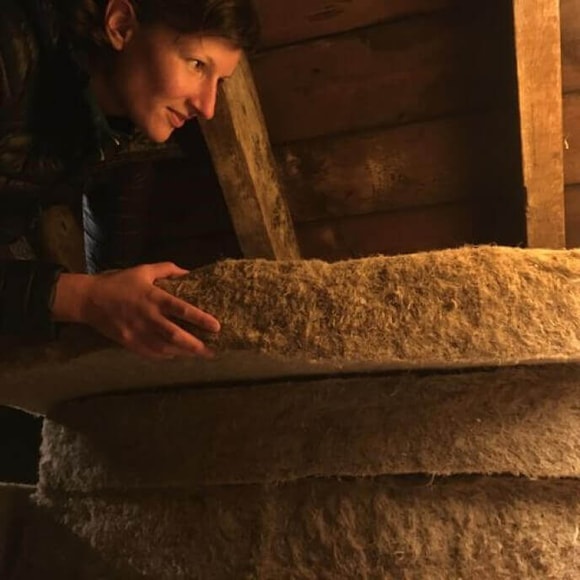 There are two main types of roof insulation: cold roof insulation and warm roof insulation. The difference between them is where the insulation is placed in relation to the roof structure and the waterproof layer.
There are two main types of roof insulation: cold roof insulation and warm roof insulation. The difference between them is where the insulation is placed in relation to the roof structure and the waterproof layer.
Cold Roof Insulation
Cold roof insulation is when the insulation is placed between the ceiling joists of the loft or attic, leaving the roof space unheated and ventilated. This is the most common and cheapest way of insulating a roof, especially for existing homes with pitched roofs and accessible lofts. Cold roof insulation can reduce heat loss through the roof by up to 25%, according to the Energy Saving Trust.
The main advantage of cold roof insulation is that it is easy and quick to install, and it does not affect the appearance or height of the roof. It also allows you to use the loft space for storage, as long as you do not compress the insulation or cover it with boards. However, cold roof insulation also has some disadvantages, such as:
- It does not prevent heat loss through the roof structure, such as the rafters, which can account for up to 15% of the total heat loss.
- It does not protect the roof structure from temperature fluctuations, which can cause condensation, dampness, and rotting.
- It does not provide any thermal or acoustic benefits for the rooms below the loft, such as reducing noise from outside or improving comfort in summer.
- It requires adequate ventilation in the roof space to prevent moisture build-up and mould growth, which can reduce the effectiveness of the insulation and pose health risks.
To install cold roof insulation, you will need to measure the width and length of your loft space and choose the appropriate thickness and type of insulation material. The recommended thickness for cold roof insulation is at least 270mm, according to the Building Regulations. You can use either loose-fill insulation, such as mineral wool, cellulose, or sheep wool, or blanket insulation, such as glass wool, rock wool, or hemp. You can also use rigid board insulation, such as polystyrene, polyurethane, or phenolic foam, but they are more expensive and require cutting and fitting.
The installation process involves laying the insulation material between the ceiling joists, making sure there are no gaps or overlaps, and leaving a 25mm gap around any pipes, wires, or vents. It would be best if you also left a 10cm gap at the eaves to allow air circulation. If you are using loose-fill insulation, you will need to spread it evenly and level it with a rake or a broom. If you are using blanket insulation, you will need to cut it to size and roll it out. You can also add a second layer of insulation on top of the first one, perpendicular to the joists, to increase the thermal performance and cover the joists.
Some of the best products for cold roof insulation from Buy Insulation Online are:
- Knauf Mineral Wool Loft Insulation Multi-Roll: This is a high-quality glass wool insulation that comes in rolls of different widths and thicknesses. It is lightweight, easy to handle and cut, and has excellent thermal and acoustic properties. It is also fire-resistant, non-combustible, and environmentally friendly.
- Sheepwool Insulation : This is a natural and sustainable insulation made from pure sheep wool. It is soft, breathable, and moisture-resistant, and has superior thermal and acoustic performance. It is also biodegradable, recyclable, and safe to install without any protective equipment.
- Steico Flex 036 Wood Fibre Insulation Batts: This is an eco-friendly insulation made from wood fibres. It is flexible, durable, and resistant to pests and mould. It has high thermal and acoustic performance and can regulate humidity and temperature. It is also carbon-neutral, recyclable, and easy to install.
Warm Roof Insulation
Warm roof insulation is when the insulation is placed above the roof structure and below the waterproof layer, creating a warm and airtight roof space. This is a more effective and modern way of insulating a roof, especially for new homes or extensions with flat roofs or inaccessible lofts. Warm roof insulation can reduce heat loss through the roof by up to 40%, according to the Energy Saving Trust.
The main advantage of warm roof insulation is that it eliminates thermal bridging through the roof structure, which can improve the energy efficiency and comfort of the home. It also protects the roof structure from condensation, dampness, and rotting, which can extend its lifespan and reduce maintenance costs. It also provides thermal and acoustic benefits for the rooms below the roof, such as reducing noise from outside and improving comfort in summer. However, warm roof insulation also has some disadvantages, such as:
- It is more expensive and complex to install than cold roof insulation, and it may require professional help and planning permission.
- It affects the appearance and height of the roof, and it may require changes to the roof pitch, drainage, and flashing.
- It does not allow you to use the roof space for storage, as it is sealed and insulated.
To install warm roof insulation, you will need to measure the width and length of your roof, and choose the appropriate thickness and type of insulation material. The recommended thickness for warm roof insulation depends on the type of material and the U-value you want to achieve, which is a measure of how much heat passes through a structure. The lower the U-value, the better the insulation. The Building Regulations require a U-value of 0.18 W/m2K or lower for warm roof insulation. You can use either rigid board insulation, such as polystyrene, polyurethane, or phenolic foam, or multifoil insulation, which is a thin and flexible insulation made of layers of foil, foam, and wadding.
The installation process involves fixing the insulation material on top of the roof structure, either by using mechanical fixings, such as screws or nails, or by using adhesive, such as glue or tape. You should make sure there are no gaps or overlaps between the boards or the layers, and seal any joints or edges with tape or mastic. You should also leave a 50mm gap around any pipes, wires, or vents, and cut out any openings for skylights or chimneys. You should then cover the insulation with a waterproof membrane, such as felt, rubber, or metal, and secure it with fixings or adhesive. You should also install a vapour barrier below the insulation, such as polythene or foil, to prevent moisture from entering the insulation from inside the home.
Some of the best products for warm roof insulation from Buy Insulation Online are:
- EcoQuilt Expert Multifoil Insulation: This is a high-performance multifoil insulation that comes in rolls of 1.5m x 10m. It is thin, lightweight, and easy to install, and has excellent thermal and vapour control properties. It can be used alone or in combination with other insulation materials, and it is suitable for pitched and flat roofs.
- IKO Enertherm PIR Insulation Board: This is premium rigid board insulation made of polyisocyanurate (PIR) foam. It comes in various sizes and thicknesses and has outstanding thermal and fire performance. It is also moisture-resistant, durable, and environmentally friendly. It can be used for pitched and flat roofs, and it is compatible with most roofing membranes and systems.
- Inditherm Hemp Insulation Batts by Indinature: This is a natural and sustainable insulation made of hemp fibres. It comes in batts of 1200mm x 600mm and has high thermal and acoustic performance. It is also breathable, moisture-resistant, and biodegradable. It can be used for pitched roofs, and it is ideal for timber-framed buildings.
How to Choose the Best Insulation for Your Roof
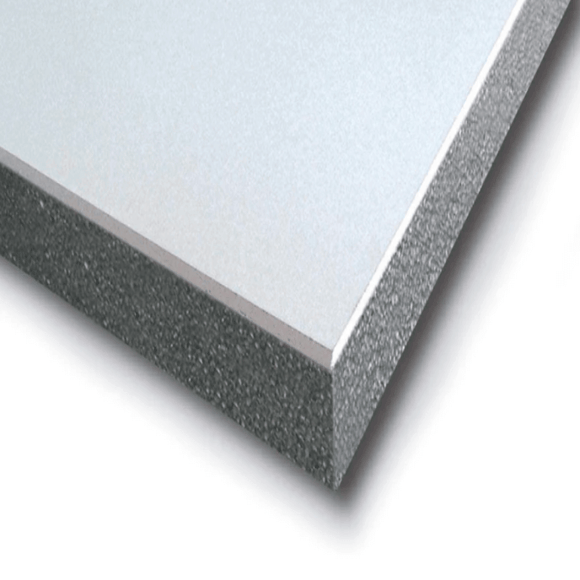 As you can see, there are many types of roof insulation available, each with its own pros and cons. So how do you choose the best one for your home? Here are some factors to consider:
As you can see, there are many types of roof insulation available, each with its own pros and cons. So how do you choose the best one for your home? Here are some factors to consider:
- The type, shape, and size of your roof: Different types of insulation are suitable for different types of roofs. For example, if you have a pitched roof with an accessible loft, you can use cold roof insulation, such as loose-fill or blanket insulation. If you have a flat roof or an inaccessible loft, you can use warm roof insulation, such as rigid board or multifoil insulation. You should also measure the width and length of your roof and calculate the area and the volume of the roof space, to determine how much insulation you will need and how much it will cost.
- The climate and location of your home: The climate and location of your home can affect the performance and durability of the insulation. For example, if you live in a cold or wet area, you may need a higher level of insulation and a more moisture-resistant material, such as PIR or phenolic foam. If you live in a hot or sunny area, you may need a lower level of insulation and a more reflective material, such as multifoil or sheep wool. You should also check the wind and snow loads on your roof, and choose a material that can withstand them, such as rock wool or hemp.
- The cost and availability of insulation materials: The cost and availability of insulation materials can vary depending on the type, quality, and quantity of the material, as well as the supplier and the delivery options. You should compare the prices and the availability of different materials, and choose the one that fits your budget and your needs. You should also consider the installation cost and the payback period, which is the time it takes for the insulation to pay for itself through energy savings. You can use online calculators or consult with experts to estimate these costs and benefits.
- The installation method and difficulty: The installation method and difficulty can depend on the type of insulation and the type of roof. Some types of insulation are easier and quicker to install than others, and some may require professional help and planning permission. You should consider your own skills and experience, and the tools and equipment you will need, before deciding to install the insulation yourself or hire a contractor. You should also follow the manufacturer’s instructions and the Building Regulations, and take safety precautions, such as wearing protective clothing and gloves and using a ladder and a scaffold.
Some of the best products for roof insulation from our website Buy Insulation Online are:
- Warmline EPS Insulated Plasterboard: This is a versatile and cost-effective product that combines rigid board insulation and plasterboard in one. It is made of expanded polystyrene (EPS) foam and gypsum board and has good thermal and fire performance. It can be used for both cold and warm roof insulation, and it is easy to install and finish, as it can be cut, nailed, screwed, or glued.
- Knauf XPS Thermal Laminate Plus Insulated Plasterboard: This is a high-quality and high-performance product that combines rigid board insulation and plasterboard in one. It is made of extruded polystyrene (XPS) foam and gypsum board and has excellent thermal and moisture performance. It can be used for both cold and warm roof insulation, and it is easy to install and finish, as it can be cut, nailed, screwed, or glued.
- Celotex GA4000 Aluminium-Faced High-Performance PIR Insulation Board: This is a premium and advanced product that consists of rigid board insulation with an aluminium foil facing on both sides. It is made of polyisocyanurate (PIR) foam and has outstanding thermal and fire performance. It can be used for warm roof insulation, and it is compatible with most roofing membranes and systems. It is also durable, lightweight, and environmentally friendly.
Versatile Benefits and Considerations
Roof insulation stands as a crucial enhancement for homes regardless of their roof structure—be it pitched or flat. While the insulation solutions may vary to suit the different roof types, the advantages remain consistent.
Pitched roofs benefit from insulation by preserving indoor temperatures and reducing energy bills, while flat roofs gain improved thermal efficiency and moisture control. Adaptable insulation materials and techniques ensure that both roof types can maintain comfortable interiors and enhance overall energy efficiency.
Costs, Longevity, and Applications
The cost of installing roof insulation fluctuates based on various elements like insulation type, roof size, and labour expenses. Seeking quotes from multiple contractors aids in assessing the most feasible option.
With proper installation and maintenance, roof insulation can endure for many years, contributing to sustained energy savings. Additionally, roof insulation finds practical application in loft conversions, ensuring compliance with building regulations while creating a well-insulated living space.
When insulating a metal roof, traditional methods like rigid insulation boards, spray foam, or mineral wool insulation offer viable solutions, each catering to the distinct needs and characteristics of the metal roof structure.
Conclusion
Roof insulation is one of the best ways to improve the energy efficiency, comfort, and value of your home. It can reduce heat loss in winter and heat gain in summer, saving you money on your heating and cooling bills. It can also prevent condensation, dampness, and mould growth, which can damage your roof structure and affect your health. Roof insulation can also reduce noise from outside, creating a more peaceful and pleasant living environment.
There are two main types of roof insulation: cold roof insulation and warm roof insulation. The difference between them is where the insulation is placed in relation to the roof structure and the waterproof layer. Cold roof insulation is when the insulation is placed between the ceiling joists of the loft or attic, leaving the roof space unheated and ventilated. Warm roof insulation is when the insulation is placed above the roof structure and below the waterproof layer, creating a warm and airtight roof space.
There are many factors to consider when choosing the best insulation for your roof, such as the type, shape, and size of your roof, the climate and location of your home, the cost and availability of insulation materials, and the installation method and difficulty. You should compare the advantages and disadvantages of different types of insulation and choose the one that fits your needs and preferences. You should also follow the manufacturer’s instructions and the Building Regulations and take safety precautions when installing the insulation.
If you are looking for a reliable and affordable online supplier of insulation materials in the UK, you should check out our website Buy Insulation Online. We offer a wide range of products for roof insulation, such as loose-fill, blanket, rigid board, and multifoil insulation, from leading brands, such as Knauf, IKO, Indinature, Celotex, and more. We also provide fast and free delivery, expert advice, and customer support. You can browse our website and order your insulation today.
Frequently Asked Questions
Q: What is roof insulation and why is it important?
A: Roof insulation is a material that is installed in the roof space of a building to regulate the temperature inside. It is important because it helps to minimize heat loss in the winter and heat gain in the summer, making the indoor environment more comfortable and energy-efficient.
Q: What are the different types of roof insulation?
A: There are several types of roof insulation, including spray foam, rigid insulation boards, mineral wool insulation, and foam insulation. Each type has its own characteristics and suitability for different roof structures and environments.
Q: How do I choose the best roof insulation for my home?
A: When choosing roof insulation, consider factors such as the type of roof (pitched or flat), climate conditions, and budget. It's recommended to consult with a professional to determine the most suitable insulation for your specific needs.
Q: Can I insulate my loft myself or should I hire a professional?
A: It is possible to install loft insulation as a DIY project, but hiring a professional can ensure proper insulation installation, especially in more complex roof and loft structures.
Q: What are the benefits of insulating my roof?
A: Insulating your roof can lead to energy savings, improved indoor comfort, reduced environmental impact, and potentially lower heating and cooling costs. It also helps to prevent issues like condensation and moisture build-up.





